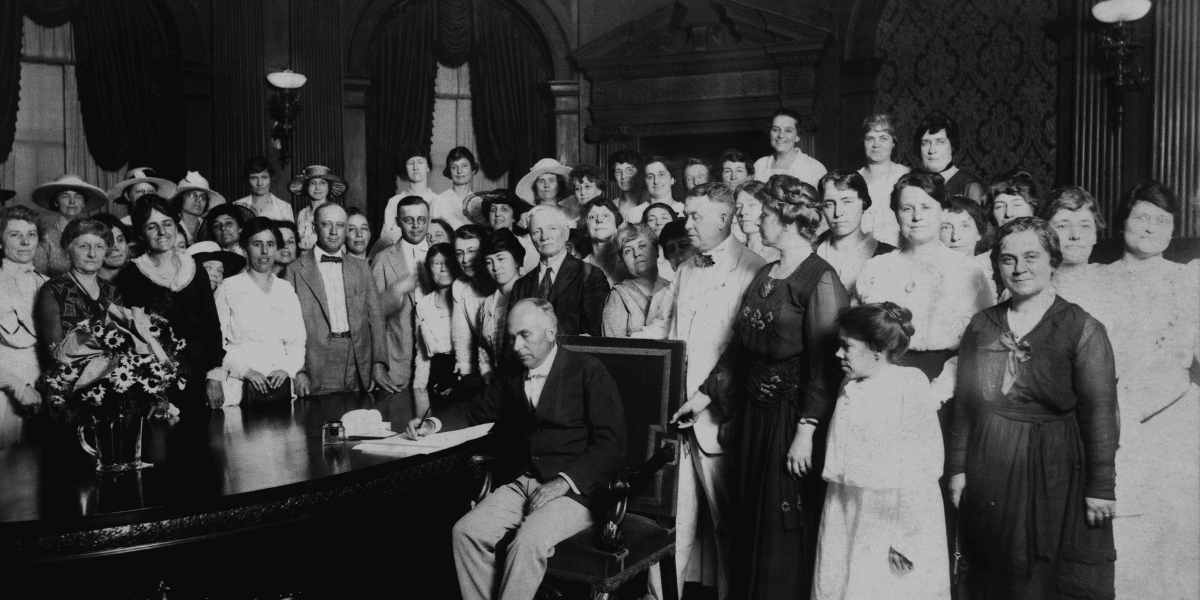Trailblazers and Trendsetters: Women in Real Estate
Hey there! It’s us again, the Heather Murphy Group, your friendly Savannah real estate experts. And we’ve got another fascinating topic to dive into.
As we find ourselves in the world of real estate, we often reflect on how things used to be. So, we want to pay homage to the women who blazed the trail for us in this field.
With that in mind, let’s take a little tour through time. We’ll start from the beginning, when the idea of a woman in real estate was almost unheard of. And we’ll make our way to the present day, where women are leaders and innovators in this field.
Along the way, we’ll explore how women have shaped and continue to influence the real estate industry. Get ready for a journey of discovery and inspiration. Let’s get started!
Early History of Women in Real Estate
In the late 18th century, America was taking its first steps as a newly independent nation. During this time, the concept of real estate was just taking shape. It was also around this time that the first mortgages started being issued. Prior to that, most land was simply occupied and not owned.
Venturing into the 19th century, the real estate industry started to take on a more structured form. It was during this period that the role of women in real estate began to evolve. However, they were primarily confined to administrative and supportive roles. Of course, this was a direct reflection of the societal norms of the time.
It’s hard to imagine it today, but our industry was overwhelmingly male-dominated. Women had to navigate an environment that was not designed with their success in mind. They faced an uphill battle, challenging the status quo, and pushing for their rightful place in our industry.
Their roles may have been limited, but these women were pivotal in shaping our industry. Even in administrative capacities, they laid the groundwork for the transformation we would witness in the coming centuries. And as we’ll see, their roles and influence only continued to grow from there.

Breakthroughs and Struggles in the Early 20th Century
The dawn of the 20th century brought significant changes for women in our country and the real estate industry.
The Early Pioneer
In 1910, Corinne Simpson became the first woman to join the National Association of Realtors (NAR). Founded in 1908, NAR was started “to unite the real estate men of America” to collectively have more influence.
It’s very important to note that at no time in the history of NAR were there gender requirements for membership. The verbiage in the statement of purpose and all male membership were more a sign of the times.
However, this shouldn’t in any way discount Corrine Simpson’s status as a trailblazer. There’s no doubt that she paved the way for generations to come. An absolute force in Seattle real estate, she remained a Realtor until 1927.
A Sign of Things to Come
In 1920, the 19th Amendment to the Constitution gave women the right to vote. Along with the direct effect it had, it also represents a major shift. The role of women across all businesses, not just real estate, began to expand. No longer relegated to support roles, women began to more widely hold management, executive, and ownership positions.
Perhaps one of the most noteworthy signs of this came in October of 1923. This is when the American Title Association of Title Men (yes, that was the name) became the American Title Association. This seemingly small shift signaled a monumental moment, as it showed just how important women had become to our industry.
Following the change, the American Title Association encouraged state associations to do the same. Additionally, they began to include a section in their newsletter called “News of the Title Women”. The column was edited by a woman; Jessie L. Chapman.
The Struggle Continues
Despite these breakthroughs, struggles were still present. The industry was rife with discrimination against women, prompting the need for a collective response. This led to the formation of the Women’s Council of Realtors in 1938. The organization sought to advocate for women in the industry and address the gender disparities that were all too apparent.
While these milestones represented significant progress, the journey was far from over. It was a continual push and pull, a dance between advancements and setbacks. The struggle was real, but so was the resilience of the women in real estate.
Progress and Hurdles in the Mid to Late 20th Century
As the pages of history flipped to the mid-20th century, women in real estate began to experience some much-deserved progress. Starting in the 1950s, the landscape of the industry shifted as most real estate boards dropped their gender-discriminatory laws. These pivotal changes allowed a greater number of women into our industry, but it was still a steep hill to climb.
Progress doesn’t mean the journey was easy. However, it’s essential to remember the resilience and determination of these women, who persevered in the face of these challenges.
The perseverance paid off when Dorcas Helfant-Browning broke the glass ceiling. In 1992, she became the first female president of the National Association of Realtors (NAR). This was a monumental achievement. It demonstrated that we could not only find a place within the industry, but also reach its highest echelons.
This change wasn’t merely symbolic; it represented a real and tangible shift within the industry. However, it’s important to remember that, even as the industry progressed, women in real estate continued to face hurdles. The journey towards gender equality in real estate has been a marathon, not a sprint.

Present Day Status of Women in Real Estate
Fast forward to the present day, and the landscape is remarkably different from those early years. Women haven’t only gained entry into all areas of the industry. We’ve proven ourselves as formidable forces, reshaping the real estate sector.
Looking at the data and you’ll see that we’ve become prominent figures. We now have significant representation as agents and brokers. As a matter of fact, since 1978, women have made up the majority of all Realtors.
But the work isn’t done. For instance, the vast majority of commercial real estate professionals are men. Additionally, there’s still headway to be made as far as executive and ownership roles are concerned.
In a nutshell, the current status of women in real estate is encouraging. However, we must recognize that there are still sectors within the industry where the representation of women can be improved. While we’ve come a long way, our journey towards full gender equality in real estate is far from over.
Conclusion
As we look back over the history of women in real estate, it’s inspiring to see how far we’ve come. Whether it’s breaking glass ceilings or leading the way in residential real estate, women have demonstrated resilience, tenacity, and innovation.
We continue to make our mark, bring new perspectives, and push boundaries. We’ve gone from not only participants, but key influencers in the industry. The contributions, from early pioneers to modern-day leaders, are proof of the enormous progress we’ve made.
Looking to the future, the momentum is undeniably positive. The trends point towards an industry that’s becoming more diverse, inclusive, and balanced. While challenges remain, we’re confident in what the future holds.
Here at the Heather Murphy Group, we’re proud to be a women-led brokerage. We’re also committed to advancing the role of women in our industry. We believe in empowering women and providing opportunities for their growth and leadership in real estate.
But we can’t do it alone! We need your support, your voice, and your engagement.
Join our team in supporting the next generation of women in real estate. Whether it’s investing in women-led businesses or advocating for fair policies, every action counts. Let’s continue the journey, knowing that our collective effort will create a more equitable and prosperous real estate industry for all.









